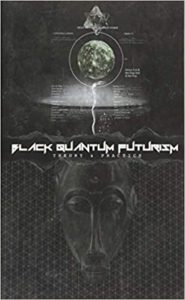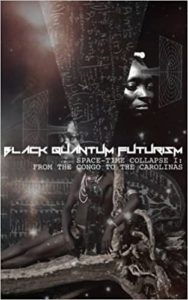In Denmark, No One Can Hear You Scream (or, Is Beowulf a Forgery?)
M.J. Harper and others at the lively and interesting site Applied-Epistemology.com are more than a little suspicious that Beowulf, and with it most if not all of the texts written in Anglo-Saxon (“Old English”), are forgeries created in the 16th century. It’s a really interesting argument. The Tudor period was a time of incredible cultural flowering and it was a time when the newly conscious nations of Europe, including England, were hungry for documents establishing their ancient heritage and, thus, legitimacy. Every nation wanted its Homer. The trade in forged religious relics had died with the Reformation, but a vigorous trade in national and literary relics took its place, and it is likely that the libraries of the gentry, whence the contents of the emptied-out monasteries landed, would also have been full of fabrications — many of them created by out-of-work former monks and scribes.
The Beowulf manuscript in the British Library is the sole source for the supposed Dark-Age story that everyone reads in English Lit, and its provenance can only be dated with any surety to right around 1700, the first time it actually is mentioned as part of the Cotton Library collection. The fire-damaged manuscript however bears the signature of a well-connected 16th-century Anglo-Saxonist Laurence Lowell, and is generally assumed to have passed through his hands sometime in the mid-1500s. If Lowell didn’t actually have a hand in creating the document, he may have acquired it via his employer, Sir William Cecil, when Lowell worked in his household tutoring Cecil’s ward, the young Edward de Vere (the later-famous Earl of Oxford, who in my view is the best candidate for the real authorship of Shakespeare’s plays).
Not unconnected to certain players in the story of the Beowulf forgery (if it is that) was the Anglican Archbishop of Armagh, also known as Bishop Ussher. He knew Cotton and used his library for his own research, and he also famously dated the creation of the world to 4004 BC, providing fuel for centuries of Creationist absurdity about the young age of the world. He’s the one who said that fossils were put in the rock to test our faith. It is really in the sphere of literature and history that we ought to be “creationists.” Documents may well be younger than they seem, essentially cultural fossils placed in the rock, made new to look old. More and more, despite initial misgivings, I am excited by the possibility that Beowulf is a far younger creation than anybody ever realized.
One of the reasons I always loved Beowulf and tried to get friends to actually read it is that aspects of it feel so weirdly modern. It has such wonderful aspects of sci-fi horror, for example: a resentful outcast monster lurking outside the light of the cheerful halls, preying on people at night, part of a race of creatures who have acid for blood. There’s a battle at the bottom of a lake. How cool is that? It doesn’t exactly feel like mythology, but like a novel. And then there’s the final dark episode with the dragon, which is totally classic. It’s a really dark and cool story, full of twists and turns and beautiful imagery of a misty, ancient Northern kingdom. This is why, despite Woody Allen’s quip that you should never take a class where they make you read Beowulf, readers are often drawn to the story and keep trying to make (invariably terrible) film versions of it.
The “acid for blood” thing has always stood out in my mind as particularly anachronistic for a story supposedly written down somewhere on either side of the year 1,000 and based on older oral tradition. Consider how vividly the poet describes it (this is from Seamus Heaney’s translation):
Meanwhile the sword
began to wilt into gory icicles
to slather and thaw. It was a wonderful thing,
the way it all melted as ice melts …
its blade had melted
and the scrollwork on it burned, so scalding was the blood
of the poisonous fiend who had perished there.
Alien, anyone? I’m not a chemist, but this sounds like a description of nitric or sulfuric acid’s affect on iron. Those acids were discovered by the Arab alchemist Geber in the 8th century, though were not industrially produced and widely used in Britain until, well, the 16th century. I have a hard time imagining a Dark-Age Anglo-Saxon scop (poet) or even a 10th or 11th century scribe writing such a description. What kind of experience would someone in Britain at that time have with highly corrosive acids? I don’t think a writer necessarily needs to have seen or heard about a thing to be able to imagine it, but this is an awfully singular image that strikes me as out of place before the Renaissance. (I’d welcome hearing a dissenting view on that from someone more acquainted with the history of chemistry/industry.)
Even more anachronistic, to my mind, is the covert theme of Beowulf, which is melancholia. I’ve always felt that the Beowulf-poet was not just some bard reciting one of the favorite legends of his people, but an original creator of a poetic work about the sickness of his own soul. The monster that terrorizes the previously cheerful hall of Heorot reads like a model of clinical depression: He is an exile, condemned to lurk beyond the reach of the light spilling from the hall of men, forced to listen in bitterness to the sound of their harps, the clink of cups, and their laughter. Unable to join them because of his original guilt (he is one of the “sons of Cain”), he lives instead with his mother at the bottom of a murky, monster-filled lake.
Anyone who has suffered depression would recognize these images and identify with Grendel’s alienation from the cheerful happy people, the stocky, manly Beowulves of this world (and perhaps would even identify with the Freudian/Hitchcockian theme of unresolved bitter and dependent feelings toward a similarly alienated mother). Grendel is a brilliant portrait of the bitter self-exile of the depressed person. By contrast, Beowulf himself is nothing more than a comic-book caricature, a frat guy cum uber-hero. In describing this contrast between the noble hall of the cheerful heroes and the alienation of the monster, the Beowulf poet was describing his own painful alienation from his fellows. The poem was a poetic expression of that melancholy loneliness.
People have always experienced introverted sadness, but just as “clinical depression” is a cultural construct of our age, melancholia was a cultural construct of the Renaissance. It was in the 15th Century that this kind of socially alienated introversion began to be romanticized and explored as an aspect of genius by writers and philosophers and playwrights. To my knowledge, you don’t get sensitive, sympathetic portrayals of melancholics before this period; and while Grendel is not exactly a sympathetic portrayal, there is definitely something sad about him and his life. It is hard not to feel his pain as he runs off, sans arm, to die at home with his mother. It is this sympathetic aspect of his character that makes Grendel seem so modern, and so inviting to modern reimagining by writers like John Gardner.
There is the whole notion that J.R.R. Tolkien, entranced by the mysteries of Beowulf and its ancient idiom, wrote The Lord of the Rings to flesh out the ancient mythological world of the Anglo Saxons and, in the process, create a uniquely English myth. What if he wasn’t original? What if, in fact, that’s what the original 16th-century writer of Beowulf was himself doing? I’m reminded of the quote by Hegel: The mysteries of the Egyptians were mysteries for the Egyptians themselves. There is an occult recursion in history, if you look carefully, and Tolkien’s relation to Beowulf seems like an example of that process.
Some of the pleasure of the “Beowulf-as-forgery” idea is admittedly simply the thrill of conspiracy, an unsolved mystery. (Finding out the truth will require carbon-dating the manuscript–perhaps after Harper and his friends gain sufficient legitimacy for their theory that the British Library could be persuaded to perform the necessary tests on this British national treasure.) But I also find that it actually adds to my pleasure in the text to read it through the lens of its being a possible product of the age of Shakespeare or Milton. I actually think it adds to the genius of the work to see its mysteries as being part of an atmosphere of pastness created imaginatively by a Renaissance writer, rather than simply a more or less faithful recording of a Dark Age legend.





Once you get the hang of this national-epic’s-gottabe-forgery business you can’t stop! We’re currently trembling on the brink of concluding that all the Icelandic sagas are forgeries. What is required is that each nation should ask that ‘receivers’ from another nation be sent in to value their own national collection. That way we should get a daisy chain of truth rather than infinitely admiring Chinese whispers.
The rule of thumb is if it’s boring (like just another translation of the Bible) it’s prolly genuine. But if it’s epic poetry…or Tolkien or Sibelius … then assume it’s modern, whether the author has actually signed it or not.